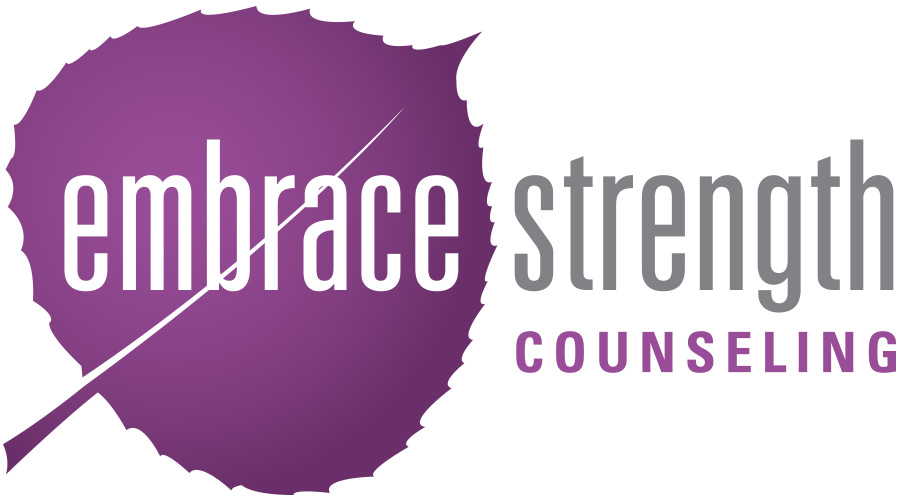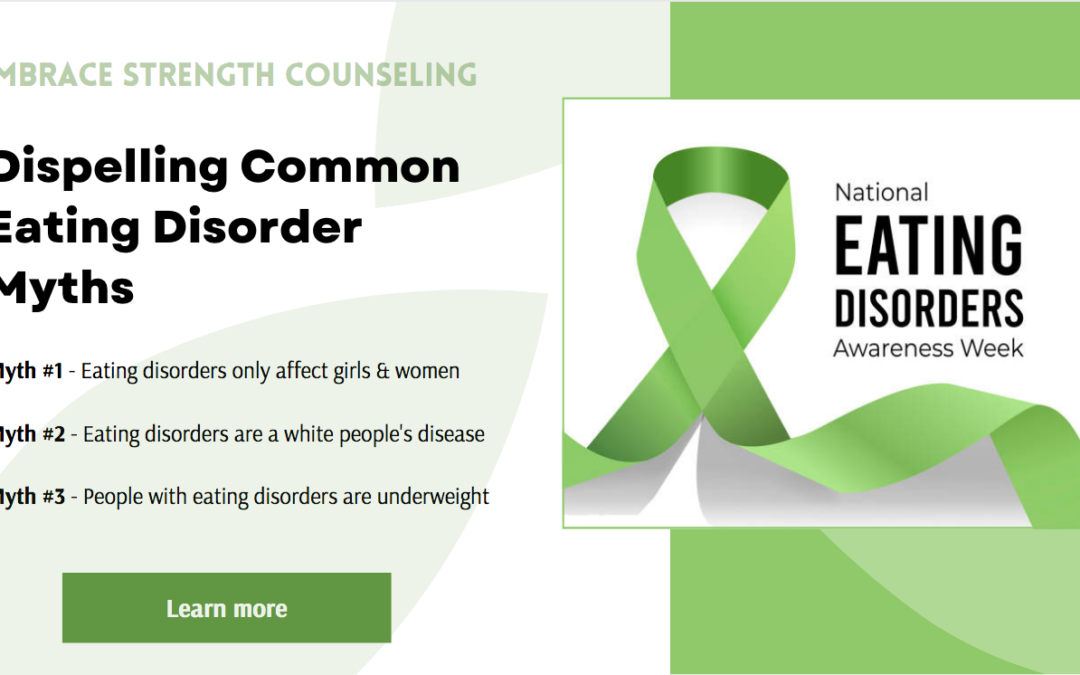This year marks the 39th annual Eating Disorders Awareness Week (EDAW) put on by the National Eating Disorders Association. The purpose of this week is to promote awareness about eating disorders, instill hope, and direct people to the resources they may need.
At Embrace Strength, we are committed to changing the eating disorder field and making eating disorder treatment accessible to people of all genders, races, and socioeconomic backgrounds. This is why we feel a special connection to this year’s theme: It’s Time for Change.
Despite decades of spreading eating disorder awareness, there are still many common misconceptions about eating disorders and who they affect. Read below to learn about some of the most common eating disorder myths we hear, and the true facts behind them.
Myth #1: Eating disorders only affect girls and women.
Although females are more likely to receive treatment for eating disorders, about 1 in 3 people struggling with an eating disorder is actually male. This means that over 10 million boys and men struggle with eating disorders in the United States alone. Furthermore, men are equally as likely as women to engage in eating disorder behaviors such as binge eating, purging, laxative abuse, and fasting for weight loss*.
So why are males under-diagnosed and under-treated when it comes to eating disorders? Part of this is because eating disorders are often considered “feminine” or “gay,” so many males do not seek help. This stigma may also prevent both clients and clinicians from fully understanding eating disorder presentations in males*.
Also, many people are not aware that transgender and gender-queer individuals are actually at the highest risk of developing an eating disorder. Evidence suggests that transgender individuals are up to 5x more likely to develop an eating disorder than cisgender women. There are many factors that contribute to this, including attempting to conform to masculine or feminine “ideals” and coping with violence/distress associated with gender identity**.
Truth: Eating disorders affect individuals of all genders, with transgender and gender-queer individuals being most at risk.
Myth #2: Eating disorders are a white people’s disease.
Historically, eating disorders have been associated with wealthy white individuals. In reality, we see that eating disorders occur at similar rates across racial groups. In some cases, disordered eating behaviors are even more likely to develop in populations of color. For example, researchers have found that Black teenagers are 50% more likely than white teenagers to engage in binging and purging behaviors. Similarly, Hispanic adolescents are significantly more likely to exhibit symptoms of bulimia than their white counterparts***.
Frequently, eating disorders are a response to environmental stress (i.e. poverty, racism, violence). Because marginalized individuals are often exposed to more environmental stressors, they may be more likely to utilize eating disorder behaviors. So why does our society associate eating disorders with white people? Well, white individuals are more likely to have access to treatment and education about eating disorders. Additionally, doctors have been shown to address eating disorder concerns in white people more frequently than non-white people, even in patients with the same presentations***.
Truth: Eating disorders occur at similar rates in individuals of all races. Sometimes, people of color are actually at a heightened risk of developing an eating disorder.
Myth #3: People with eating disorders are visibly underweight.
When we think of eating disorders, many of us picture underweight, emaciated bodies. However, this is not an accurate depiction. Eating disorders affect people of all body sizes. In fact, most individuals suffering with an eating disorder do not experience a low body weight. Thus, it is common for eating disorder diagnoses to be missed in straight-sized and large-bodied individuals****.
It is important to understand that binge eating disorder is not the only eating disorder that individuals in large bodies may experience. People in large bodies often meet criteria for anorexia, bulimia nervosa, OSFED, and more. Eating disorders experienced by people with higher weights are equally as serious as eating disorders experienced by small-bodied individuals. This is a result of medical complications, self-harm, and co-occurring mental illness. A skilled eating disorder practitioner will assess eating disorder symptoms and lab results beyond weight****.
Truth: You cannot tell by looking at somebody whether they have an eating disorder.
To learn more about common eating disorder misconceptions, visit http://nationaleatingdisorders.org.
—
*https://www.nationaleatingdisorders.org/learn/general-information/research-on-males
**https://www.eatingdisorderhope.com/blog/transgender-people-likely-develop-eating-disorder
***https://www.nationaleatingdisorders.org/people-color-and-eating-disorders

